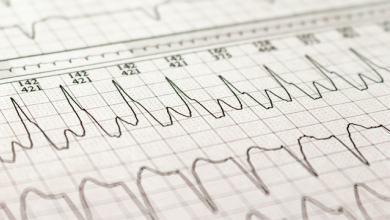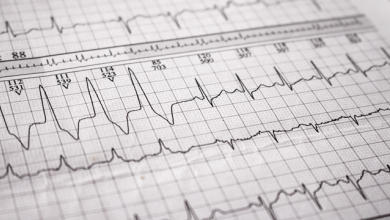Search results
Wide Complex Tachycardia
Author(s):
John B Garner
,
John M Miller
Added:
3 years ago
Article
Atrial Myopathy Underlying AF
Author(s):
Harold Rivner
,
Raul D Mitrani
,
Jeffrey J Goldberger
Added:
3 years ago
Article
Author(s):
David Schaack
,
Boris Schmidt
,
Shota Tohoku
,
et al
Added:
1 year ago
Author(s):
Laurent Roten
,
Matthew Daly
,
Patrizio Pascale
,
et al
Added:
3 years ago
With an ageing population and widespread use of implantable cardioverter-defibrillators, physicians are confronted with an increasing number of patients with symptomatic, drug-refractory ventricular tachycardia (VT). Catheter ablation is an important treatment option in the management of patients with structural heart disease and VT.1,2 In many patients, VT can be successfully ablated from the…
View more
Author(s):
George D Katritsis
,
Vishal Luther
,
Prapa Kanagaratnam
,
et al
Added:
3 years ago
The introduction of cardiac electroanatomic mapping systems in the mid-1990s has permitted investigators to record intracardiac electrograms (EGMs) with accurate spatial localisation in 3D.1 These 3D mapping systems have enabled the display of the cardiac chambers as an anatomical shell upon which voltage, or activation, information can be displayed. Most commonly, colour is used to represent the…
View more
Author(s):
Neil T Srinivasan
Added:
3 years ago
Dr Neil Srinivasan (Essex Cardiothoracic Centre, Basildon, UK) evaluates of the role of dynamic substrate changes in facilitating conduction delay and re-entry in ventricular tachycardia (VT) circuits.
Recorded remotely from Basildon, 2020.
View more
Author(s):
Pasquale Santangeli
,
Luigi Di Biase
,
Eloisa Basile
,
et al
Added:
3 years ago
The number of invasive electrophysiological procedures is steadily increasing in Western countries, as techniques advance and the age of the population increases. Gender exerts a profound influence on the epidemiology, pathophysiology and clinical presentation of many cardiac rhythm disorders, and all these factors may affect the outcome of invasive electrophysiological procedures. Disturbingly,…
View more
Author(s):
Carina Blomström-Lundqvist
,
Tatjana S Potpara
,
Helena Malmborg
Added:
3 years ago
With the advent of successful surgical repairs and modern diagnostic techniques, an increasing number of patients with congenital heart disease survive to adulthood. Despite these improvements, the surgical corrective atrial incisions performed during childhood lead to subsequent myocardial scarring that have the inherent risk of harbouring substrates for macro-reentrant atrial tachycardias …
View more
Author(s):
Raphael K Sung
,
Penelope A Boyden
,
Satoshi Higuchi
,
et al
Added:
2 years ago
Author(s):
Megan Barber
,
Jason Chinitz
,
Roy John
Added:
3 years ago
Ventricular arrhythmias are designated idiopathic when demonstrable structural heart disease, significant coronary disease including coronary spasm or genetic arrhythmia syndromes are absent.1 These arrhythmias may be benign but are also a recognised cause of sudden cardiac death. The common form of idiopathic ventricular tachycardia (VT) originates in the ventricular outflow tracts, manifest…
View more

















 « First
« First